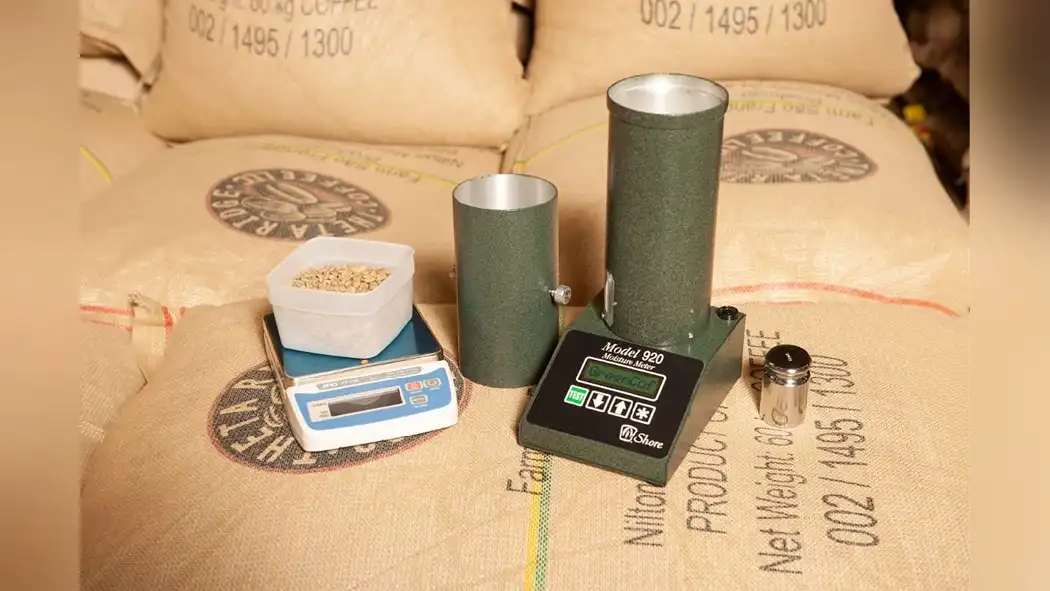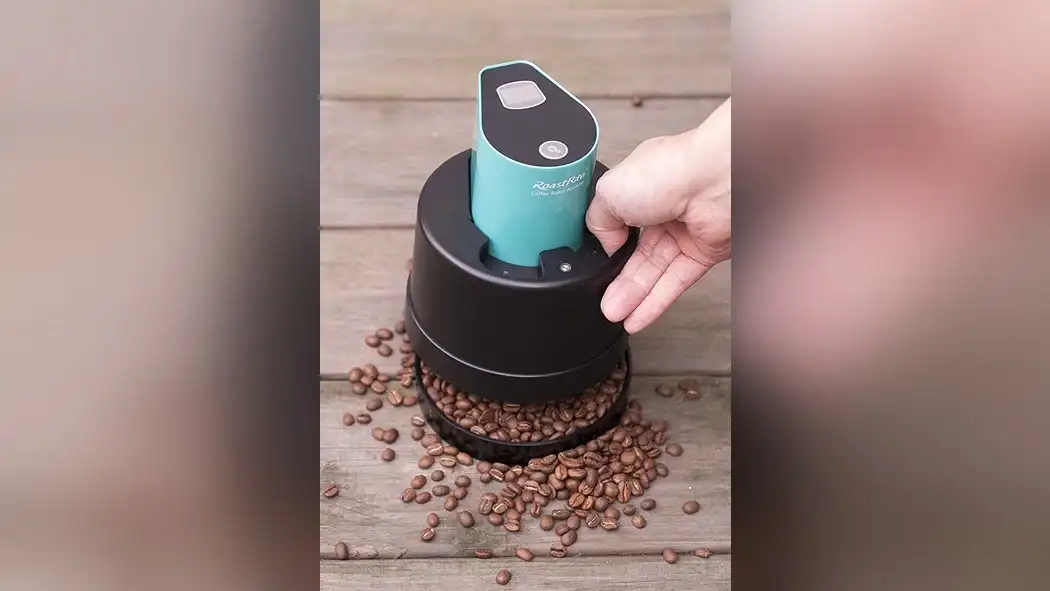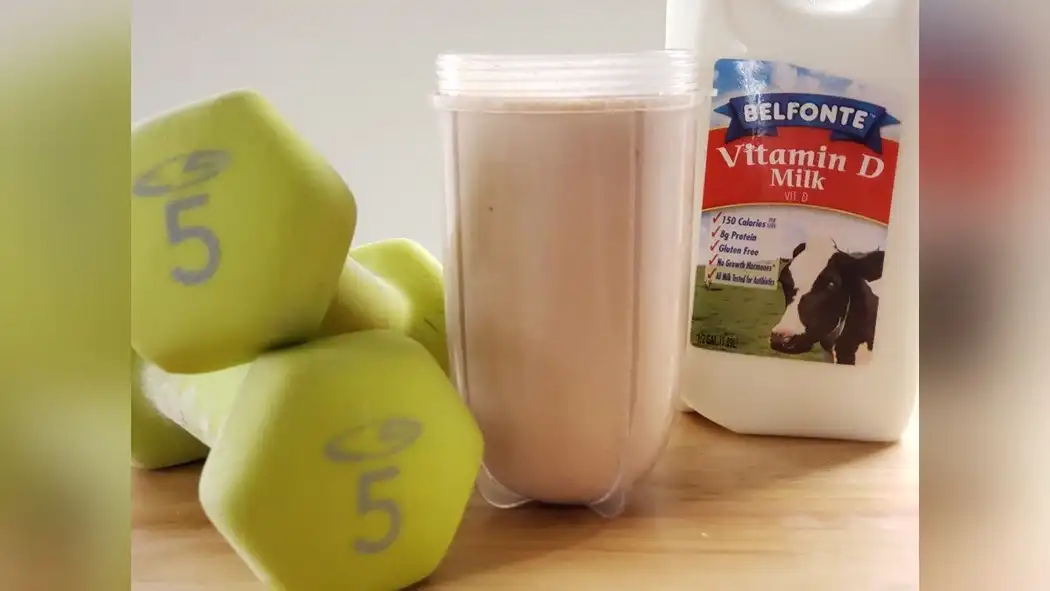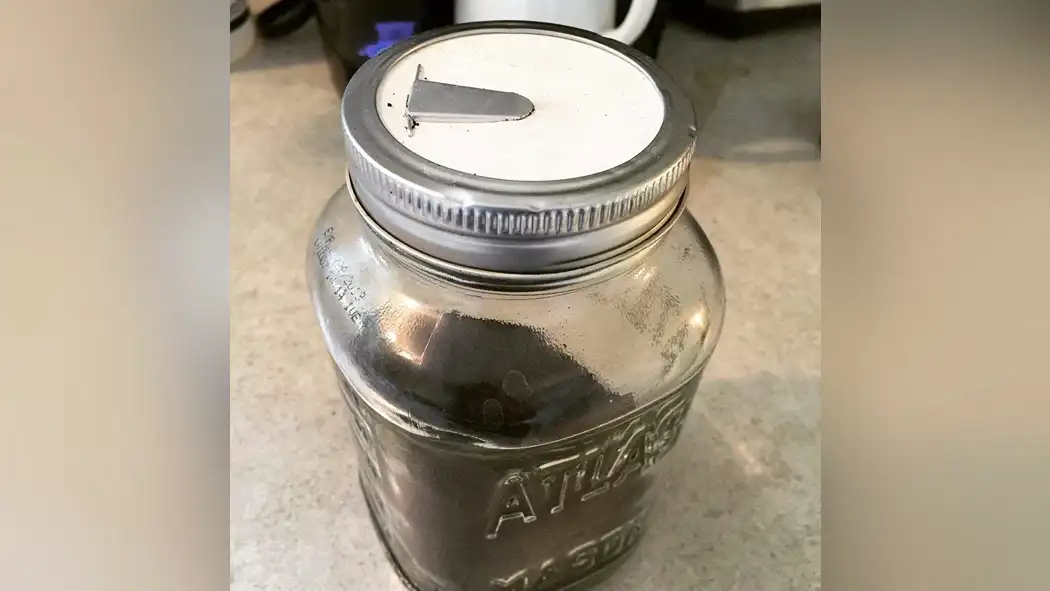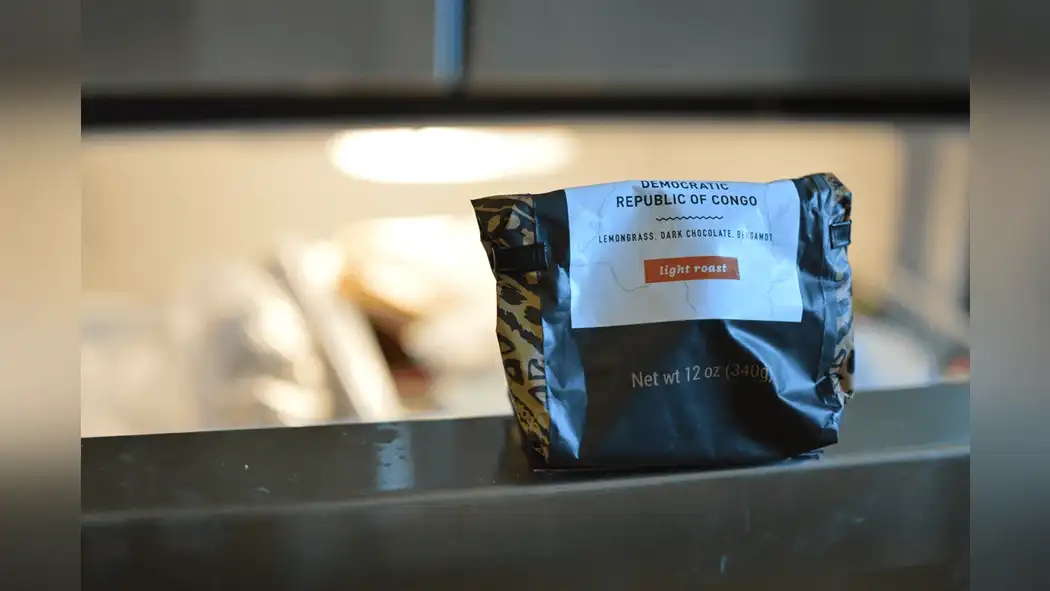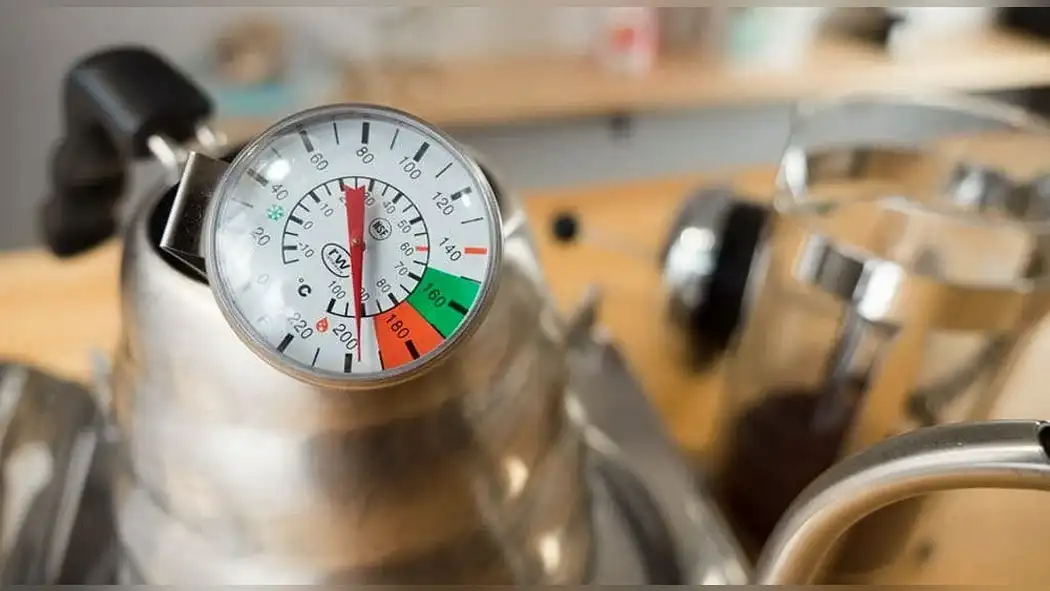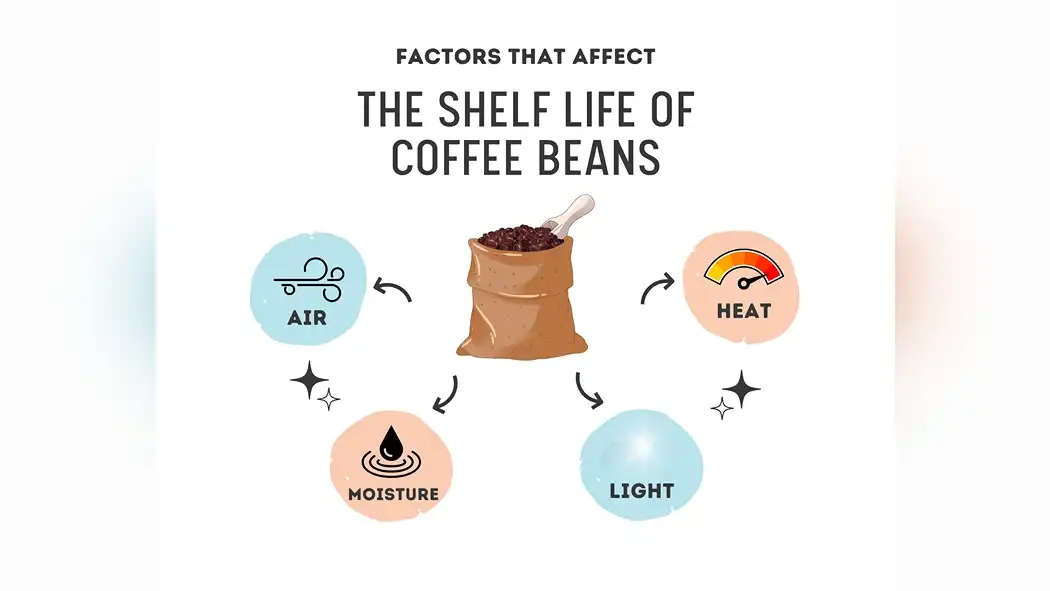Do you love the rich aroma and flavor of freshly roasted coffee beans? To ensure that your coffee stays fresh and full of flavor, proper packaging is key.
In this article, we will provide you with 12 essential tips for packaging your coffee beans to protect them against moisture. By following these tips, you can enjoy a consistently great cup of coffee every time you brew.
So let's dive in and discover how to keep your coffee beans perfectly preserved and full of flavor.
Choose a Moisture-Resistant Packaging Material
You should choose a moisture-resistant packaging material for your coffee beans.
When it comes to preserving the quality and freshness of your coffee, moisture is one of the biggest adversaries. By using moisture-resistant packaging options, you can ensure that your coffee beans stay dry and free from moisture-related damage.
There are several benefits of using moisture resistant packaging. Firstly, it helps to prevent the growth of mold and bacteria, which can affect the taste and aroma of your coffee.
Secondly, it prolongs the shelf life of your coffee beans, keeping them fresh for a longer period of time.
Lastly, moisture-resistant packaging also protects the beans from absorbing any unwanted odors or flavors.
Use Airtight Bags or Containers
To prevent moisture from damaging your coffee beans, ensure that you store them in airtight bags or containers. Using airtight packaging is crucial for moisture control and ensuring the effectiveness of your coffee bean packaging.
When coffee beans are exposed to moisture, they can become stale and lose their flavor. Airtight bags or containers create a barrier that prevents moisture from entering and affecting the quality of your coffee beans. These airtight packaging options are designed to seal in freshness and protect your beans from moisture, ensuring that they stay flavorful and aromatic for longer periods.
Opt for Single-Use Packaging
Using single-use packaging is another effective way to protect your coffee beans against moisture. While reusable packaging may seem like a more sustainable option, it is important to consider the impact of moisture on coffee bean quality. Moisture can lead to mold growth, loss of flavor, and overall degradation of the beans. By opting for single-use packaging, you can ensure that your coffee beans are protected from moisture throughout the entire supply chain. This helps to maintain the freshness and quality of your coffee beans, resulting in a better cup of coffee. Below is a table comparing single-use packaging and reusable packaging in terms of their impact on coffee bean quality and moisture protection:
| Single-Use Packaging | Reusable Packaging | |
|---|---|---|
| Moisture Protection | Excellent | Varies |
| Impact on Coffee Bean Quality | High | Varies |
| Sustainability | Limited | High |
| Convenience | High | Varies |
| Cost | Low | High |
Avoid Using Paper Bags
When it comes to protecting your coffee beans from moisture, it's important to steer clear of paper bags. Instead, consider moisture-proof packaging options that provide better protection.
Not only will alternative materials offer benefits such as increased durability and resistance to moisture, but they can also provide cost-effective packaging solutions for your coffee beans.
Moisture-Proof Packaging Options
You can protect your coffee beans from moisture by choosing packaging options that are moisture-proof and not using paper bags.
When it comes to moisture-proof bag types, there are a few options to consider. One popular choice is the foil bag, which is made of a durable material that prevents moisture from seeping in.
Another option is the vacuum-sealed bag, which removes all the air from the packaging, creating a barrier against moisture.
Additionally, you can opt for bags with moisture control methods built-in, such as desiccant packs or one-way valves. These features help absorb excess moisture and prevent it from entering the bag.
Benefits of Alternative Materials
To protect your coffee beans from moisture, it is important to consider the benefits of using alternative materials for packaging. While paper bags may seem like a convenient option, they are not the best choice when it comes to preventing moisture damage. Instead, opting for eco-friendly packaging materials can offer numerous advantages. One such option is moisture barrier films, which provide an effective shield against moisture and ensure the freshness of your coffee beans. These films are designed to create a barrier that prevents moisture from seeping into the packaging and compromising the quality of the beans. By using moisture barrier films, you can ensure that your coffee beans stay fresh for longer periods, ultimately enhancing the overall coffee-drinking experience.
| Benefits of Eco-Friendly Packaging | Advantages of Using Moisture Barrier Films | Keywords |
|---|---|---|
| Reduces environmental impact | Prevents moisture damage | Eco-friendly |
| Recyclable and biodegradable | Preserves coffee bean freshness | Barrier films |
| Sustainable and renewable | Enhances coffee-drinking experience | Moisture |
Cost-Effective Packaging Solutions
Using alternative packaging materials is a cost-effective solution for protecting your coffee beans against moisture, without resorting to paper bags. One option is using eco-friendly materials like biodegradable or compostable bags, which not only provide moisture protection but also minimize environmental impact. These bags are made from renewable resources and can be easily disposed of without harming the planet.
Another cost-effective option is using vacuum-sealed bags, which effectively seal out moisture and preserve the freshness of your coffee beans. Additionally, investing in resealable bags can help extend the shelf life of your coffee beans, allowing you to enjoy their rich aroma and flavor for a longer period.
Consider Using Vacuum-Sealed Packaging
If you want to protect your coffee beans from moisture, you should consider using vacuum-sealed packaging. Vacuum-sealing can provide numerous benefits, such as preventing oxidation and extending the shelf life of your coffee beans.
However, if vacuum-sealing isn't an option for you, there are alternative packaging methods that can help minimize moisture exposure.
Benefits of Vacuum-Sealing
Consider the advantages of utilizing vacuum-sealed packaging for your coffee beans to preserve their freshness and protect against moisture. Vacuum-sealing is a highly effective method that offers several benefits:
- Extended Shelf Life: Vacuum-sealed packaging can significantly extend the shelf life of your coffee beans by preventing exposure to oxygen, which can lead to oxidation and loss of flavor and aroma.
- Moisture Protection: Vacuum-sealing creates an airtight barrier that protects your coffee beans from moisture, preventing mold and bacterial growth.
- Preservation of Flavor: By eliminating oxygen and moisture, vacuum-sealed packaging helps to preserve the natural flavors and aromas of your coffee beans, ensuring a fresh and enjoyable cup of coffee every time.
While there are vacuum sealing alternatives available, such as one-way valves or zipper bags, they may not offer the same level of protection against moisture and oxygen as vacuum-sealed packaging.
Additionally, some drawbacks of vacuum sealing include the need for specialized equipment and the potential for increased packaging costs. However, the benefits of vacuum-sealed packaging make it a worthwhile investment for preserving the quality of your coffee beans.
Alternatives to Vacuum-Sealing
To achieve optimal moisture protection for your coffee beans, explore alternatives to vacuum-sealing such as utilizing vacuum-sealed packaging.
While vacuum-sealing is an effective method for preserving the freshness of your beans, there are other options available that can provide similar moisture control.
One alternative is using moisture-resistant bags that have a resealable zipper closure. These bags are designed to keep out moisture and air, ensuring that your coffee beans stay fresh for a longer period of time.
Another sustainable option is using eco-friendly packaging materials, such as compostable or biodegradable bags. These materials aren't only better for the environment, but they also provide moisture protection for your coffee beans.
Use Moisture-Absorbing Packets or Sachets
To prevent moisture damage, ensure your coffee bean packaging is equipped with moisture-absorbing packets or sachets. These small packets are filled with moisture-absorbing agents, such as silica gel, that help to maintain the quality of your coffee beans.
Here are three reasons why using moisture-absorbing packets or sachets is beneficial:
- Preserves Flavor: Moisture can have a detrimental impact on the flavor of coffee beans. By using moisture-absorbing packets, you can prevent the beans from absorbing excess moisture, preserving their natural taste and aroma.
- Extends Shelf Life: Moisture can lead to the growth of mold and bacteria, which can spoil the coffee beans. Including moisture-absorbing packets in the packaging helps to extend the shelf life of the beans by reducing the risk of moisture-related spoilage.
- Maintains Freshness: Coffee beans are highly susceptible to moisture, which can cause them to become stale and lose their freshness. The moisture-absorbing packets or sachets help to keep the beans dry, ensuring they stay fresh for a longer period.
Store Coffee Beans in a Cool and Dry Place
To keep your coffee beans in optimal condition, store them in a cool and dry place. Proper storage conditions are essential for moisture control and maintaining the freshness and flavor of your coffee. Moisture can degrade the quality of the beans and lead to mold growth or a stale taste. A cool temperature prevents the beans from overheating and preserves their natural oils and flavors. A dry environment prevents moisture from seeping into the beans and causing them to become stale or lose their aroma. Consider the following table to understand the ideal storage conditions for coffee beans:
| Storage Conditions | Ideal Range |
|---|---|
| Temperature | 60-70°F |
| Humidity | 30-50% |
| Exposure to sunlight | Avoid direct sunlight |
Avoid Exposing Coffee Beans to Direct Sunlight
Keep your coffee beans away from direct sunlight to maintain their freshness and quality. Sunlight exposure can have detrimental effects on coffee beans, affecting their flavor, aroma, and overall quality.
Here are three reasons why you should avoid exposing your coffee beans to direct sunlight:
- Oxidation: Sunlight exposure can accelerate the oxidation process of coffee beans, leading to a loss of flavor and aroma. This can result in a dull and stale-tasting cup of coffee.
- Moisture Retention: Sunlight can increase the moisture content in coffee beans, which can lead to mold growth and spoilage. Moisture is a primary enemy of coffee beans, causing them to lose their freshness and develop off-flavors.
- Degradation of Essential Oils: The UV rays from direct sunlight can break down the essential oils present in coffee beans, resulting in a loss of complexity and depth in the final brew.
To preserve the quality and freshness of your coffee beans, store them in a cool, dry place away from sunlight exposure.
Use Resealable Packaging for Easy Access
When packaging your coffee beans to protect against moisture, consider using resealable bags for easy access. Resealable packaging offers numerous benefits for coffee bean storage.
Firstly, it provides a convenient way to open and close the bag, allowing you to easily access your coffee beans whenever you want to brew a fresh cup. This eliminates the need to transfer the beans to another container, reducing the risk of exposure to moisture during the process.
Secondly, resealable bags ensure that your coffee beans remain fresh for longer periods. The tight seal prevents air and moisture from entering the bag, preserving the aroma and flavor of the beans.
Package Coffee Beans in Small Quantities
When packaging coffee beans in small quantities, you can decrease moisture absorption and preserve the freshness of the beans. By dividing the beans into smaller packages, you minimize the exposure to air and moisture, ensuring that each batch remains as fresh as possible.
This approach allows you to enjoy the full flavors and aromas of your coffee beans for a longer period of time.
Decrease Moisture Absorption
To reduce moisture absorption, package your coffee beans in smaller quantities. This simple step can significantly improve the shelf life and quality of your coffee. Here are three reasons why packaging coffee beans in small quantities is effective for moisture control:
- Reduced exposure: By packaging coffee beans in smaller amounts, you minimize the surface area exposed to moisture. This helps to limit the absorption of moisture and maintain the freshness of the beans.
- Improved sealing: Smaller packages are easier to seal effectively. Proper sealing techniques, such as using resealable bags or vacuum-sealed containers, can create a barrier against moisture, preventing it from entering the packaging and affecting the coffee beans.
- Enhanced convenience: Smaller packages offer greater convenience for consumers. They allow for easier portioning, reducing the exposure of unused coffee beans to air and moisture. This ensures that each serving of coffee remains fresh until it's brewed.
Preserve Coffee Bean Freshness
To preserve the freshness of your coffee beans, package them in smaller quantities.
Moisture management plays a crucial role in maintaining the quality of coffee beans. When coffee beans are exposed to moisture, they can lose their flavor and aroma, resulting in a less enjoyable cup of coffee.
By packaging your beans in smaller quantities, you can minimize the amount of air and moisture that comes into contact with them. This helps to preserve their freshness for a longer period of time.
Additionally, using appropriate packaging techniques, such as resealable bags or containers with one-way valves, can further enhance moisture management. These techniques prevent moisture from entering the packaging while allowing gases, such as carbon dioxide, to escape.
Consider Using Tin Containers for Long-Term Storage
For long-term storage of coffee beans, opt for tin containers as they provide excellent protection against moisture. Tin containers are a popular choice for preserving the freshness of coffee beans due to their ability to create a barrier against moisture. Here are three reasons why using tin containers is a great option for long-term storage:
- Durability: Tin containers are sturdy and can withstand the test of time, ensuring that your coffee beans remain safe and protected.
- Airtight Seal: Tin containers can be tightly sealed, preventing any air or moisture from entering and affecting the quality of your coffee beans.
- Light and Heat Resistance: Tin containers aren't only moisture-proof but also offer protection against light and heat, which are known to degrade the flavor and aroma of coffee beans.
Conduct Regular Quality Checks on Packaging Materials
To ensure the effectiveness of your coffee bean packaging against moisture, regularly check the quality of your packaging materials. Conducting regular quality checks on your packaging materials is essential to maintain the freshness and quality of your coffee beans. By doing so, you can identify any potential issues or defects that may compromise the integrity of the packaging and the beans inside.
Here is a table that outlines the importance of conducting regular quality checks on packaging materials:
| Benefits of Regular Quality Checks | Cost Saving Measures | Impact on Flavor Profile |
|---|---|---|
| Ensures packaging integrity | Identifies defects | Maintains coffee freshness |
| Prevents moisture ingress | Reduces waste | Preserves flavor quality |
| Enhances product shelf life | Improves efficiency | Minimizes flavor degradation |
Conclusion
So there you have it, 12 useful tips for packaging coffee beans against moisture.
Remember to choose moisture-resistant materials, opt for airtight and vacuum-sealed packaging, and conduct regular quality checks.
Did you know that improper packaging can cause coffee beans to lose up to 50% of their flavor within just two weeks?
By following these tips, you can ensure that your coffee beans stay fresh and flavorful for longer periods, providing a better brewing experience.






